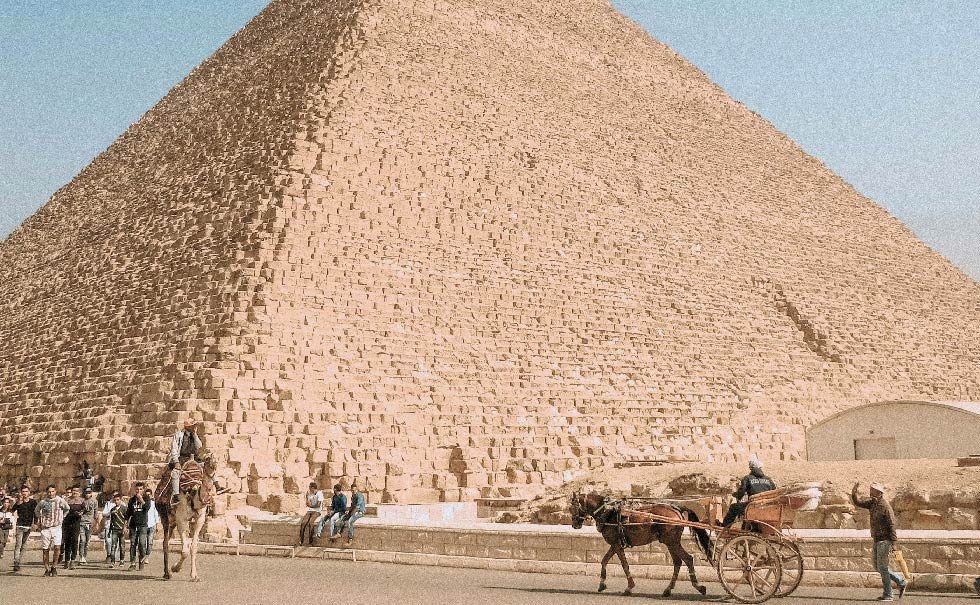Parshat Bo
This week’s Parsha takes us into the last of the 10 plagues of Egypt, these miracles are deeply ingrained on us as people, each year we gather around the Seder table and count the plagues by dipping[1] our finger into the wine or by spilling out[2] the wine onto a side plate. As much as these acts represent the symbolic end of Egypt as a civilization, they also simultaneously represent the birth of the Israel as an independent and unique nation:
In the deeper sources reveal that the 10 plagues represent an undoing of creation of itself, there are according to the Mishnah[3] 10 levels of Holiness in terms of physical location, however the Kabbalistic sources[4] discuss 50 levels of Holiness and Impurity that mirror the 50 levels of Understanding as the Talmud teaches[5]:
“Fifty Gates of Understanding were created in the world, and 49 were given to Moshe our teacher.”
This is further elaborated[6]:
The Sages teach: “R. Yannai said that the Torah’s words were not given in a clear-cut [and uncompounded] manner; rather, they comprise 49 ‘pure’ levels and 49 ‘impure’ levels.
It is understood by a variety of Torah commentators that Egypt had reached the 49th level of impurity and consequently the Children of Israel had also reached this level by dwelling in Egypt – what was needed was to undo the entire element of creation and forge anew – this is represented by the 10 plagues having a direct relationship with the 10 utterances of creation[7].
Let us look at the plagues in order and see their relationship to the narrative of creation:
We have the plague of blood, we are told that Aaron is to take his staff and hold it over all of Egypt’s bodies (or gatherings) of water. The word[8] used to describe the “bodies” or “gatherings” of water is מקוה. This is the same word that appears in the opening chapters of Genesis when God created the seas[9]:
וַיִּקְרָא אֱלֹהִים לַיַּבָּשָׁה אֶרֶץ וּלְמִקְוֵה הַמַּיִם קָרָא יַמִּים וַיַּרְא אֱלֹהִים כִּי טוֹב
“God called the dry land Earth, and the gatherings (מקוה) of waters He called Seas. And God saw that it was good.”
The use of the word מקוה in connection with the plague of blood is the same as in the creation of the seas.
It is important to note that in the Parsha of Shemot[10], Hashem gives several signs to Moshe intended to convince the Israelites of the veracity of their Prophet: turning the staff into a snake, his hand becoming leprous and finally the water becoming blood: in as much as the converting of water into blood was a tremendous sign to the Egyptians and a direct attack on their deity who oversaw the Nile, it reminded the Israelites of their blood connection to Hashem through being the descendants of Abraham
The next three plagues are able to be understood as interconnected: The frogs are associated with water, the lice with earth, and the flies with air:
The Frogs[11] emerged from the various rivers, canals, and ponds of Ancient Egypt, swarmed together entering the houses, sleeping chambers, beds, and even the bake-ovens and kneading troughs of all Egyptians and their slaves. This refers to what God says in the creation narrative[12]: “Let the waters swarm with swarms of living creatures.” Both descriptions in Bereshit and Shemot use the Hebrew root associated with swarming: שְׁרְצ֣).
Similarly the lice[13] come from the earth: The description of lice corresponds to that of crawling creatures (רֶ֛מֶשׂ) that are created in Bereshit[14].
The Flies[15], perhaps better described or a swarm of insects; correspond to the flying creatures of the creation story. In Creation[16] Hashem commands that “flying creatures multiply in the land”.
Pestilence affected specifically domesticated animals. In Bereshit the animals[17] were created specifically for man. In the plague of pestilence, the domestic animals that were already under man’s dominion died, in contrast the Children of Israel did not lose any of their livestock.
The plague of boils does not easily fit within the context of Creation, however when considered as an attack on the nature of the people it makes more sense, the Egyptians were fastidiously clean and this represented a deep level of disgust to their culture, in the Torah a person afflicted with boils is ritually impure[18]. This further cements the difference between the Children of Israel and the Egyptians.
The plagues of the hail and locusts both involved the destruction of vegetation:
Whatever was not destroyed by the hail was totally consumed by the locusts, which are themselves a Kosher animal[19].
Our Narrative in Bereshit teaches[20]: “The land brought forth vegetation: seed bearing fruit with seed in it”, however by the end of these two plagues it is related that[21] “nothing green was left of tree or grass of the field in all the land of Egypt.” The penultimate plague is darkness in which a thick physical darkness descended upon all the land of Egypt for three days[22]:
לֹא רָאוּ אִישׁ אֶת אָחִיו וְלֹא קָמוּ אִישׁ מִתַּחְתָּיו שְׁלֹשֶׁת יָמִים וּלְכָל בְּנֵי יִשְׂרָאֵל הָיָה אוֹר בְּמוֹשְׁבֹתָם.
“People could not see one another, and for three days no one could get up from where he was; but all the Israelites enjoyed light in their dwellings.”
What is described here is not simply the absence of light. The darkness is something physical[23]: “a darkness that can be touched (וְיָמֵ֖שׁ חֹֽשֶׁךְ)”.
In Egypt, God has reverted the darkness and light to what had been prior to the end of the first day of creation[24].
The final plague, the death of the first-born as well as the complete destruction of the Egyptian army at the Sea of Reeds is a mirror image of that which is expressed where Hashem said[25], “We will make man in Our image and after our likeness.” Instead of creating mankind, he is instead destroying the human males who in form are similar to the primordial human Adam.
Shabbat Shalom!
Rabbi Jonathan Goldschmidt 2023 ©
www.rabbigoldschmidt.com
[1] Rabbi Eleazar ben Judah, “the Rokeach” of Worms (c. 1176–1238), in Derasha lePesach, p.101, who records that Rabbi Eliezer (ben Yitzchak) HaGadol (c. 990–1060) had this custom
[2] Rabbi Yitzchak Luria (The Arizal) holds that one should pour the wine from the cup itself (Mishnat Chassidim, Seder Leil Pesach 11:1; Siddur Ha-Arizal)
[3] Mishnah Kaylim:1:6
[4] Zohar Chadash Yisro 31a
[5] Talmud Bavli: Rosh Hashanah 21b
[6] Midrash Tehillim 12
[7] Zohar I, 24a; II, 60a
[8] Shemot/Exodus 7:19
[9] Bereshit/Genisis: 1:10
[10] Shemot/Exodus: (4:9)
[11] Ibid: 7:28-29 + 8:1-2
[12] Genisis/Bereshit:1:20
[13] Shemot/Exodus: Exodus 8:12–13
[14] Bereshit/Genesis: 1:24
[15] Shemot/Exodus: 8: 16-21
[16] Bereshit/ Genesis 1:22
[17] Bereshit/Genisis: 2:18–20
[18] Vayikra/Leviticus 13:18–23
[19] Ibid: 11:20–23 & Shulchan Aruch (Code of Jewish Law): Yoreh Deah: 85
[20] Bereshit/Genesis 1:12
[21] Shemot/Exodus: 10:15
[22] Ibid 10:21–23
[23] Ibid
[24] Bereshit/Genisis: Genesis 1:4-5
[25] Ibid: 1:26




